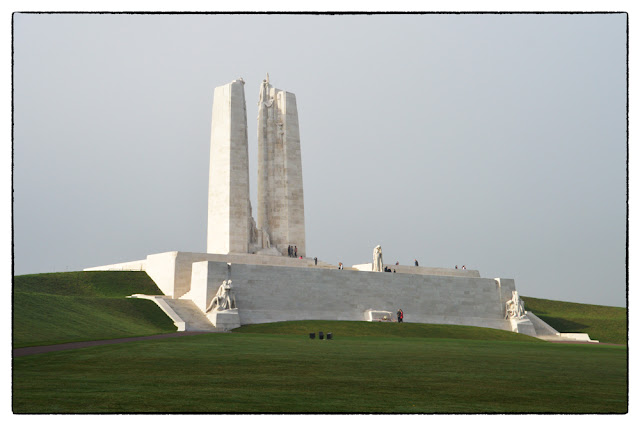This compelling epitaph is engraved on the tombstone of poet Robert Frost: "I had a lover's quarrel with the world." Frost himself chose that. What it means is that he had a lover's quarrel with God. And, whether we realize it or not, the same is true of us all.
We quarrel with the world and God because of the evil we encounter in our lives. Why is there so much war and hatred? Why so much sickness and sorrow? Why so much anxiety and insecurity? Why so much loneliness and emptiness? Why death? Why did God make such an imperfect world? (Truthfully, it is not the world that is not perfect...It is the peole who live in it who make it imperfect.)
We lament that the world is not perfect, forgetting that if it were, there might not be a place for our loved ones or us in it. We all fall short of perfection. It was into this world that we were called. It was in this world that our loved ones were called. Consequently, whenever we quarrel with God's world, let's be sure it's a lover's quarrel. Let's never forget to love this world because it is a gift of Grace; it is a gift from God.
And from a related school of thought...with a twist
If it seems like most of the headlines these days are grim (87 percent of news reporting was about bad issues, according to one source), it’s because there is simply too much bad news to report.
What is a person to do when growing weary of reading about and watching war atrocities, lethal tornadoes, floods, strikes, protests and murders?
Dr. Pieter Noomen, a fellow blogger, wrote about a far more peaceful approach to life’s realities, using words he believed were given to him by what he called a Presence, a higher being or the Real Reality. He believed we have better options.
"What you hope, the way you think or how you behave, is it all in pleasant harmony? If so, you function in accordance with the rhythm and design of the whole universe,” he wrote. “Full peace or perfection is impossible on earth, but not a desiring or working on it! From your deepest within, insight may surface about how your life should be lived.”
Dr. Noomen worked as a psychotherapist and staff member at a Los Angeles church, completed doctoral studies in theology and pastoral psychology at the Free University of Amsterdam, and became senior minister of three Protestant churches. He died in 2019, but his writings remain available to everyone on his website.
He asked these questions: "Can one human being who lives in peace and with inner harmony make a difference? For that matter, will anything change because someone does believe these words? Most things on earth are fractured. Are you able to heal, or why should you bother? Do you need to be involved politically or be an activist for justice debunking phoniness? Should you fight, donate money, speak up, vote or volunteer to protest brokenness? Asking yourself questions like these can lead to exploring your personal motives.”
And he added: “Politics can be corrupt, religion divisive and science erring: what'll you stand for? What's your goal, vision, pride or intention?”
What is a person to do when growing weary of reading about and watching war atrocities, lethal tornadoes, floods, strikes, protests and murders?
Dr. Pieter Noomen, a fellow blogger, wrote about a far more peaceful approach to life’s realities, using words he believed were given to him by what he called a Presence, a higher being or the Real Reality. He believed we have better options.
"What you hope, the way you think or how you behave, is it all in pleasant harmony? If so, you function in accordance with the rhythm and design of the whole universe,” he wrote. “Full peace or perfection is impossible on earth, but not a desiring or working on it! From your deepest within, insight may surface about how your life should be lived.”
Dr. Noomen worked as a psychotherapist and staff member at a Los Angeles church, completed doctoral studies in theology and pastoral psychology at the Free University of Amsterdam, and became senior minister of three Protestant churches. He died in 2019, but his writings remain available to everyone on his website.
He asked these questions: "Can one human being who lives in peace and with inner harmony make a difference? For that matter, will anything change because someone does believe these words? Most things on earth are fractured. Are you able to heal, or why should you bother? Do you need to be involved politically or be an activist for justice debunking phoniness? Should you fight, donate money, speak up, vote or volunteer to protest brokenness? Asking yourself questions like these can lead to exploring your personal motives.”
And he added: “Politics can be corrupt, religion divisive and science erring: what'll you stand for? What's your goal, vision, pride or intention?”
All good questions to ask of ourselves when we engage in personal inventory of where we stand in life from time to time.



